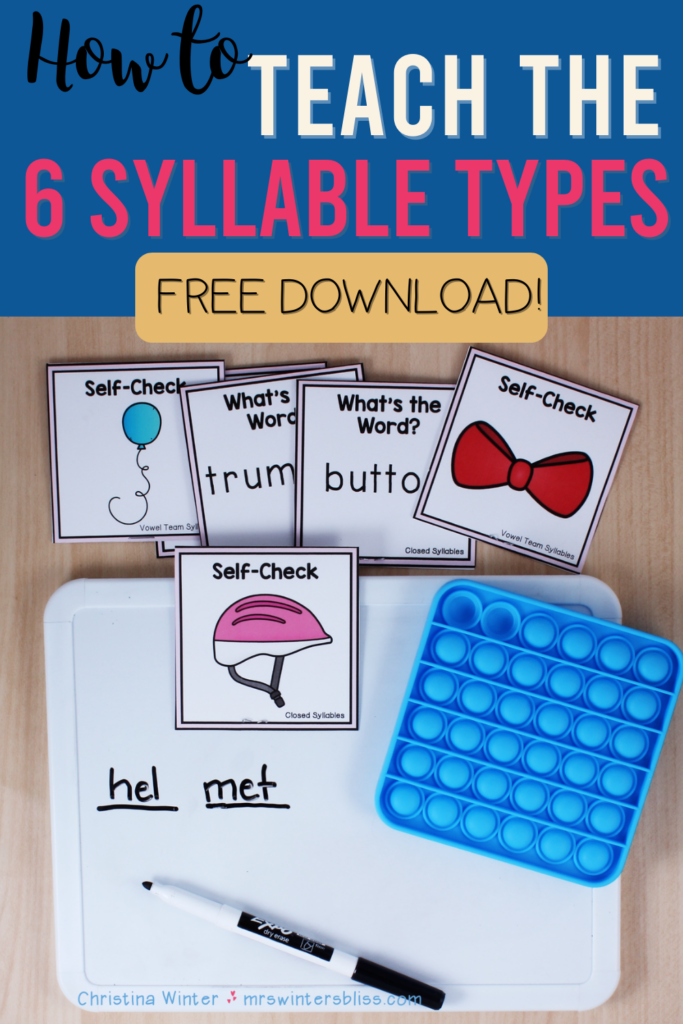
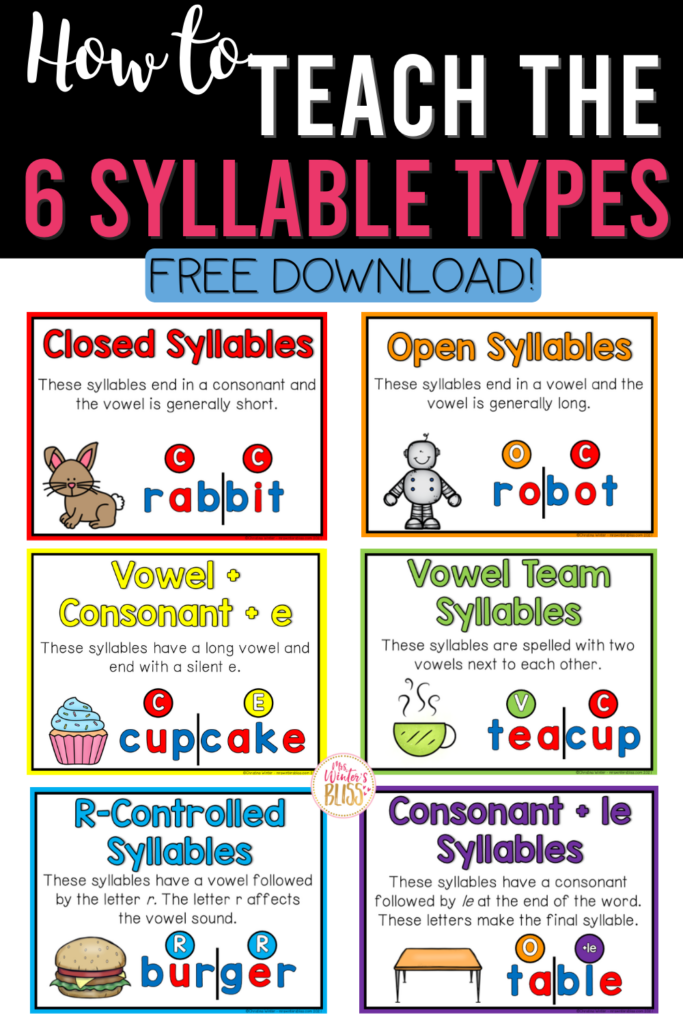
When we align our instruction to the Science of Reading, we know that teaching the six different syllable types to our students will help them decode bigger, more complex words and become more effective readers! In this post, you’ll get ideas for teaching the syllable types to your students, details about my Syllable Types and Syllable Division Resource, and FREE syllable types activities perfect for your first or second grade classroom!
Syllables….you probably know them as units of sound we use to divide words. Maybe you count them, clap them out or segment words on paper. But did you know that there are SIX different types of syllables?
A syllable is a word, or a part of a word, with one vowel sound. You count syllables by listening to how many vowel sounds you hear in a single word.
We know vowels and vowel combinations can make all different sounds, so knowing the different kinds of syllables helps students to determine what sound the vowels will make.
When we align our instruction to the Science of Reading, we know that teaching these different syllable types to our students will help them decode bigger, more complex words and become more effective readers!
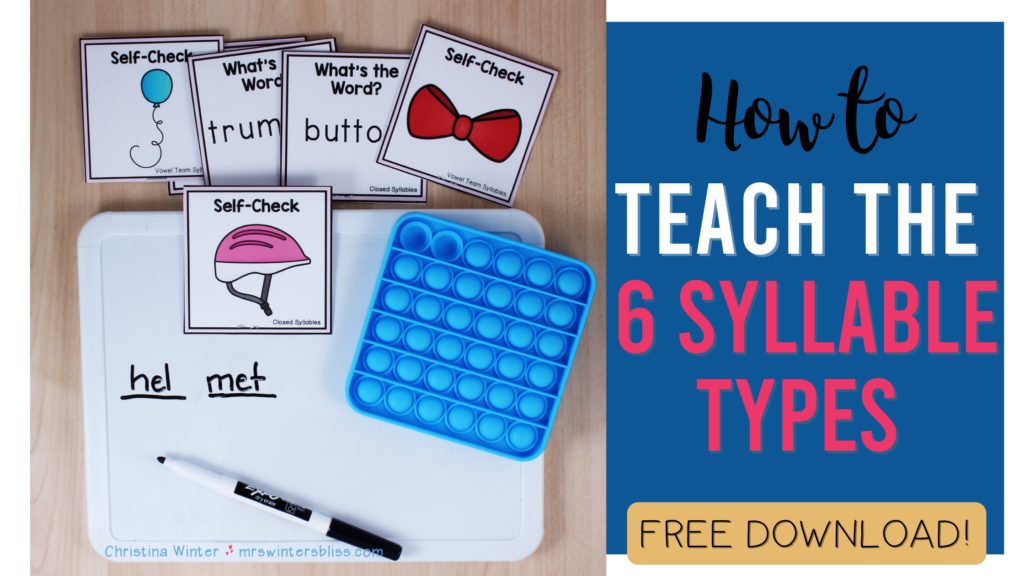
Today I’m excited to share what I’ve learned from research and training on the six syllable types including viewing these Really Great Reading Webinars and reading Teaching Big Words by UFLI.
Teaching the syllable types can help our students become stronger readers and spellers. I’ll provide ideas for activities for practice, share details about my own Syllable Types resource, and leave you with an awesome FREEBIE to get you started!
Why Teach the Different Types of Syllables?
Do you have students who are able to apply their phonics knowledge to read two syllable words but when presented with a longer word, they freeze up? Maybe they give it a guess or just skip it altogether.
These students don’t realize that longer words are really just smaller words and patterns put together.
Teaching students the syllable types helps them understand how to break longer words into manageable parts. It allows them to read longer words more accurately and fluently, helps to build their confidence as readers, and gives them a strategy for attacking these longer, more challenging words!
What Are The Six Syllable Types?
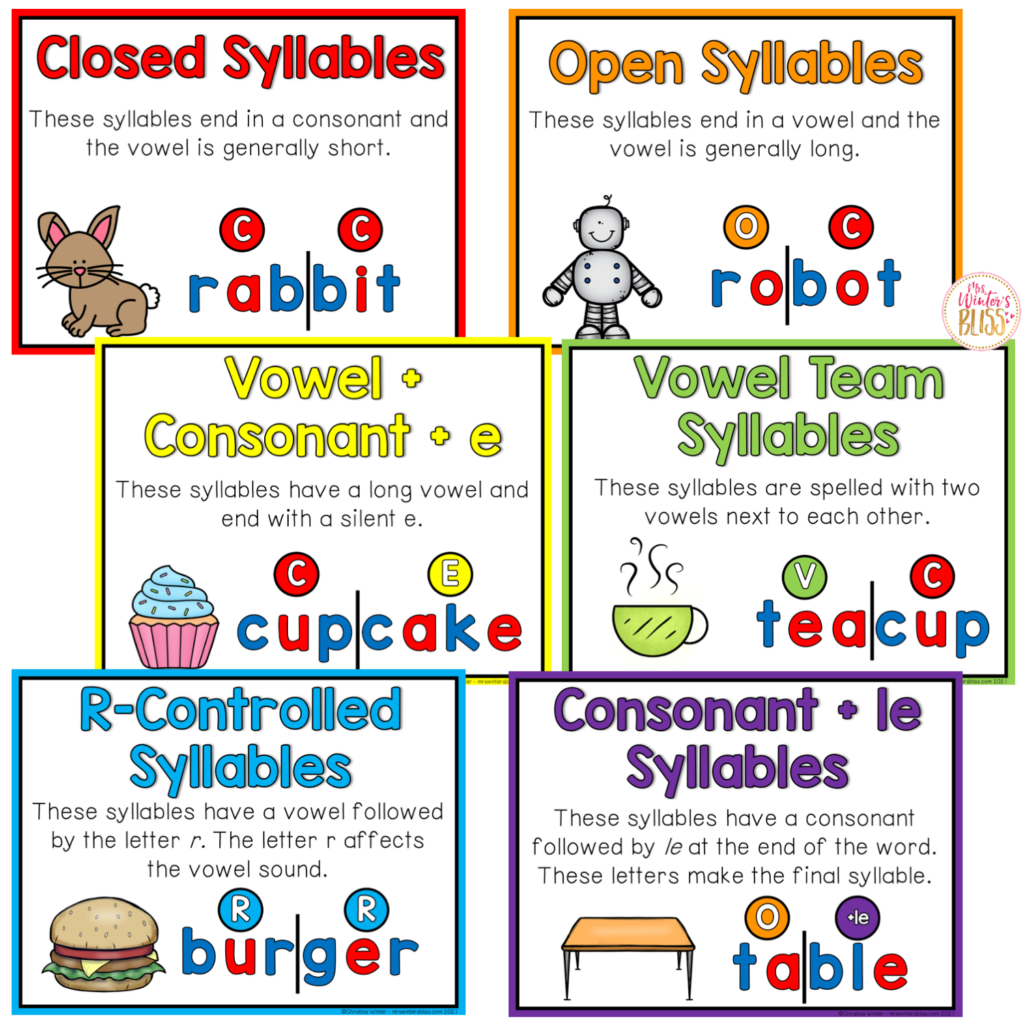
💕 Closed: These syllables end in a consonant and the vowel is usually short. This is the most common type of syllable we see in English. Ex: rab–bit
💕 Vowel + Consonant + E Syllables: These syllables have a long vowel and end with a silent e. Ex: cup-cake
💕 Open Syllables: These syllables end in a vowel and the vowel is generally long. Ex: ro-bot
💕 Vowel Team Syllables: These syllables are spelled with two vowels that are next to each other. Ex: tea-cup
💕 R-Controlled: These syllables have a vowel followed by the letter r (er, ir, ur, ar, or). The letter r affects the vowel sound. These types of syllables can be difficult for students to master and will likely require continuous review. Ex: bur–ger
💕 Consonant + LE: These syllables have a consonant followed by -le at the end of the word. If a C-le syllable is combined with an open syllable — as in cable, you do not double the consonant. If one is combined with a closed syllable — little — you double the consonant.
Multi-Sensory Syllable Activities
As teachers, we need to give our students plenty of activities that give them practice breaking words up into the different syllables and identifying the syllable types.
There are a lot of great syllable activities out there! Because many of them have both visual and kinesthetic aspects, students find them highly engaging. Here are a few of my favorites….
Silicone Bubble Poppers: These things are all the trend these days so your students will no doubt LOVE using them to divide words into their syllable parts. Students simply push down a popper for each syllable they hear in the given word. They can then identify the type of each syllable they “popped”.
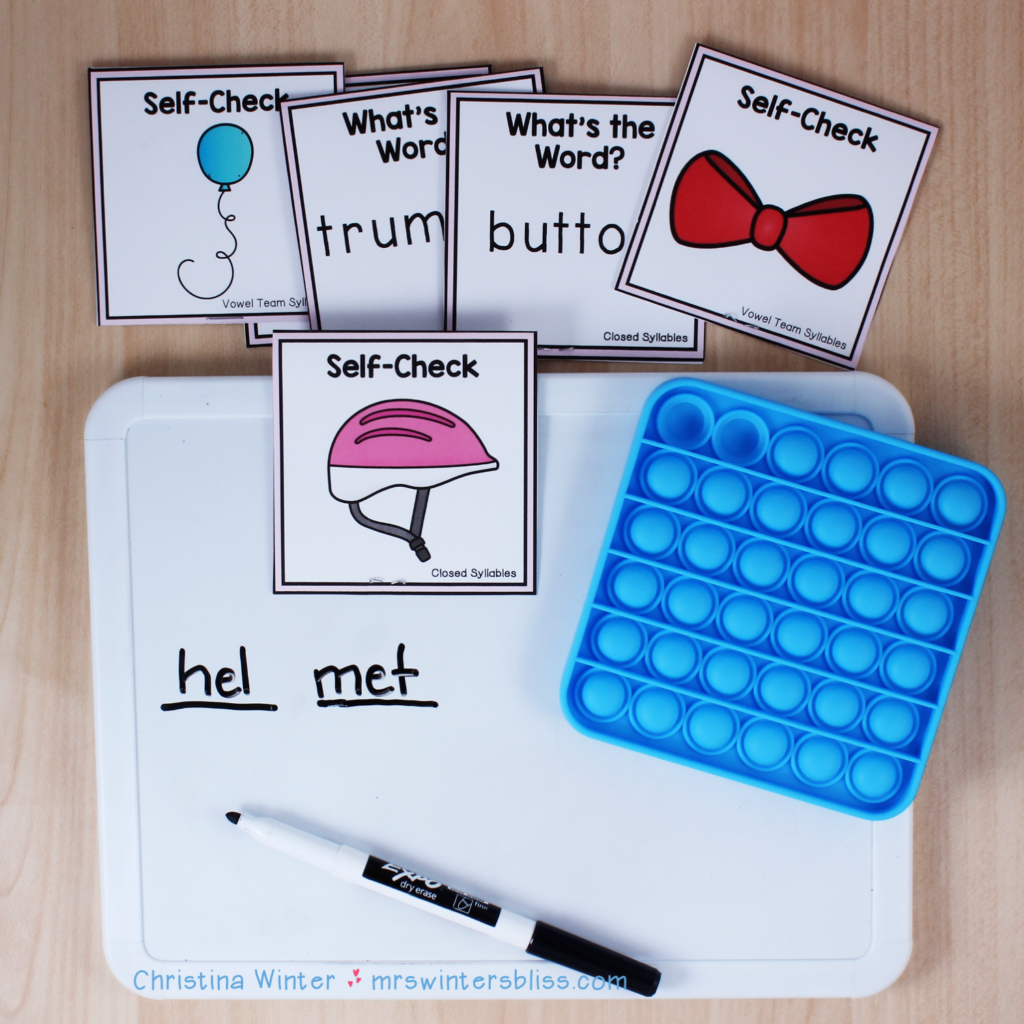
Linking Cubes: Physical linking cubes allow students to see how longer words are just made up of smaller parts. Students use different colored cubes to represent the different syllable types. They can build each syllable and then link them together to form the full, longer word.
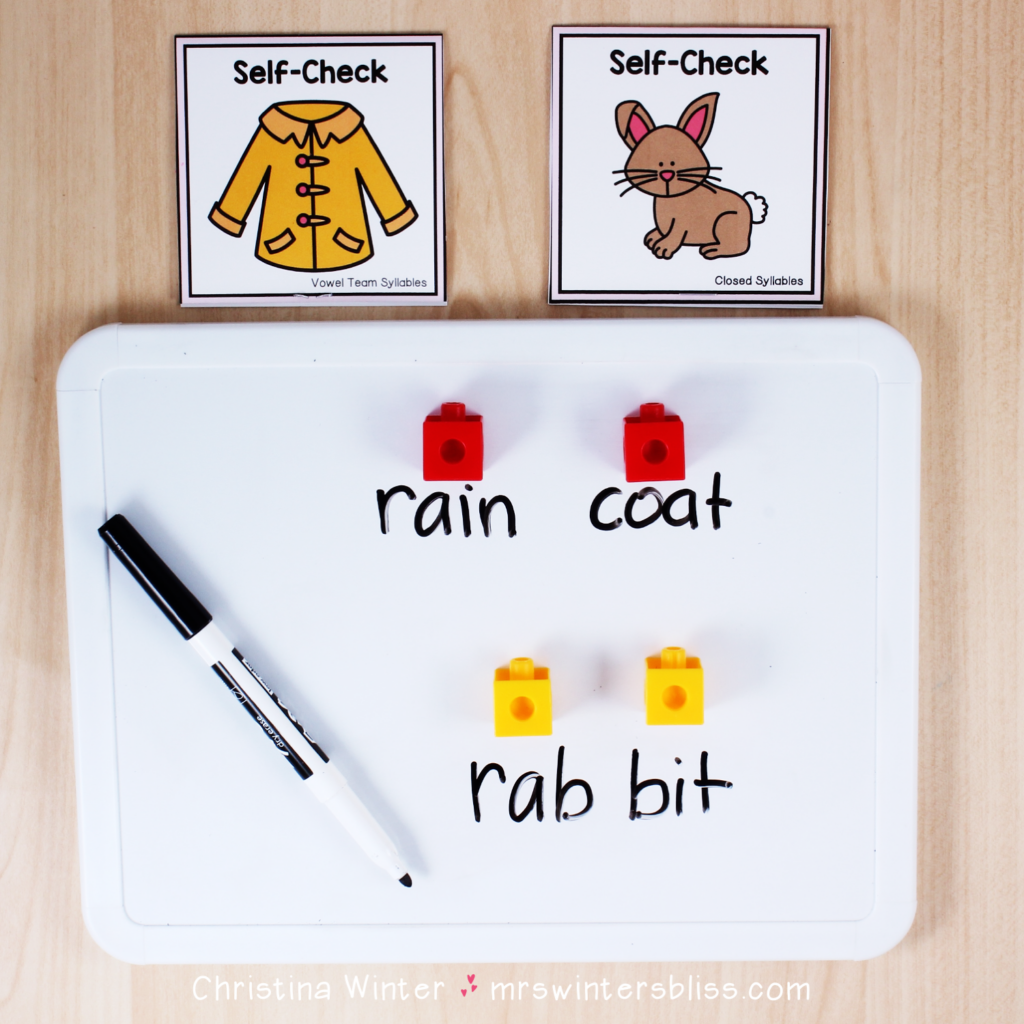
Single Syllable Type Sort: This is a great game that gives students practice identifying syllable types in single syllable words. Simply write the known syllable types in columns or boxes on a piece of paper and cut out word cards (you can download a free set here). Students then take a card, identify the syllable type and sort it into the correct syllable box or column.
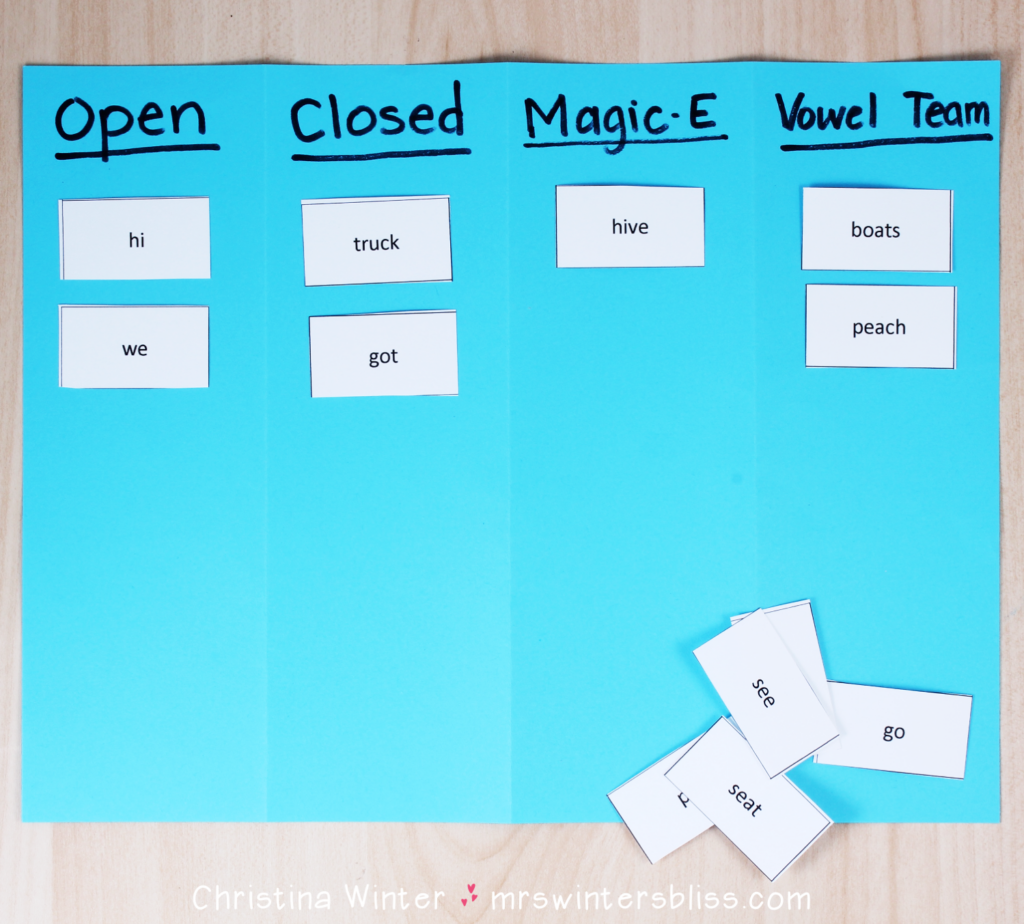
Highlight the Syllable: I love this one because it is low-prep and gives students practice splitting the word into syllables and then identifying the types. Simply assign a crayon color to a syllable type. For example, students would use a pink crayon for all closed syllables, a yellow one for open syllables, etc. Students then go through a list of words and highlight them using the color that matches the type of syllable(s) in the word.
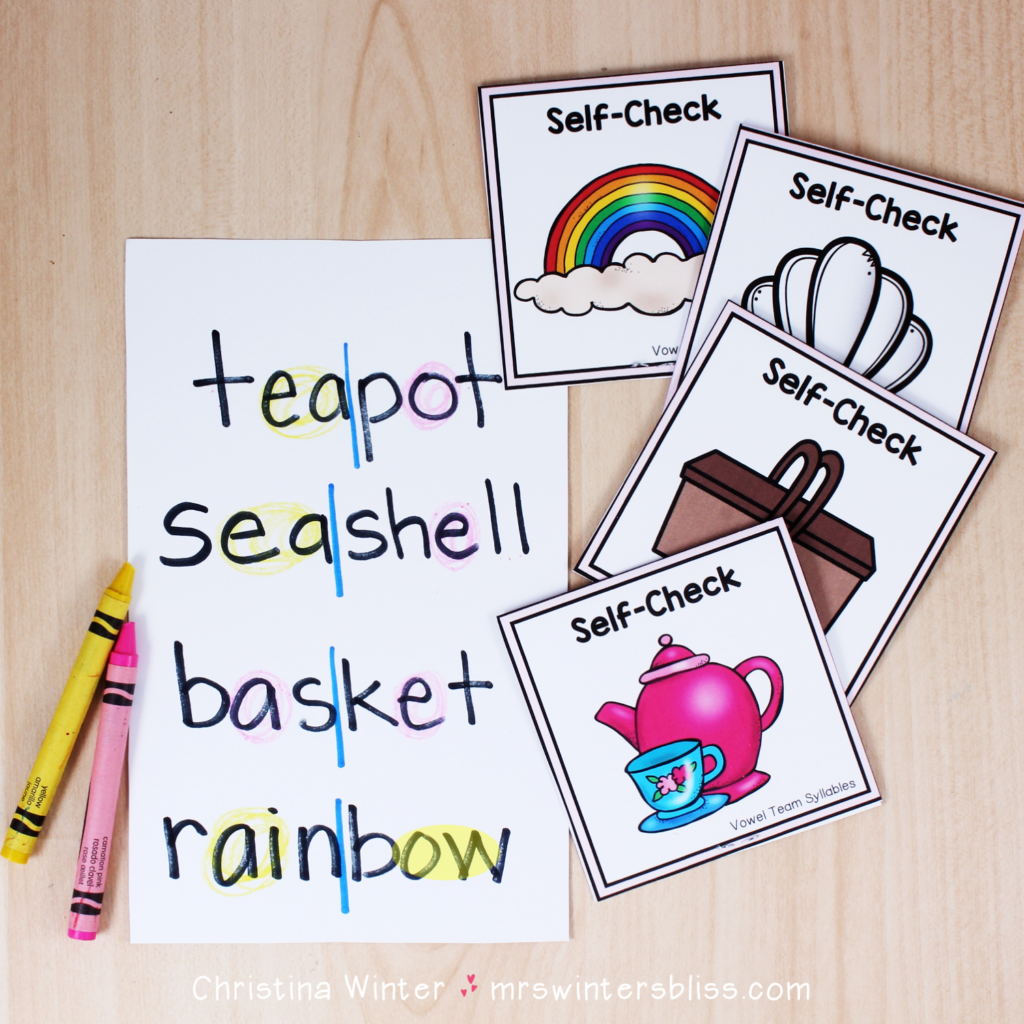
My Syllable Types and Syllable Division Resource
This six syllable types (closed, open, magic e, vowel team, r-controlled, consonant +le) resource comes with everything you need for teaching syllable types to your students!
You’ll get digital teaching slides designed for explicit whole group instruction you’ll use when you are first introducing your students to the syllable types.
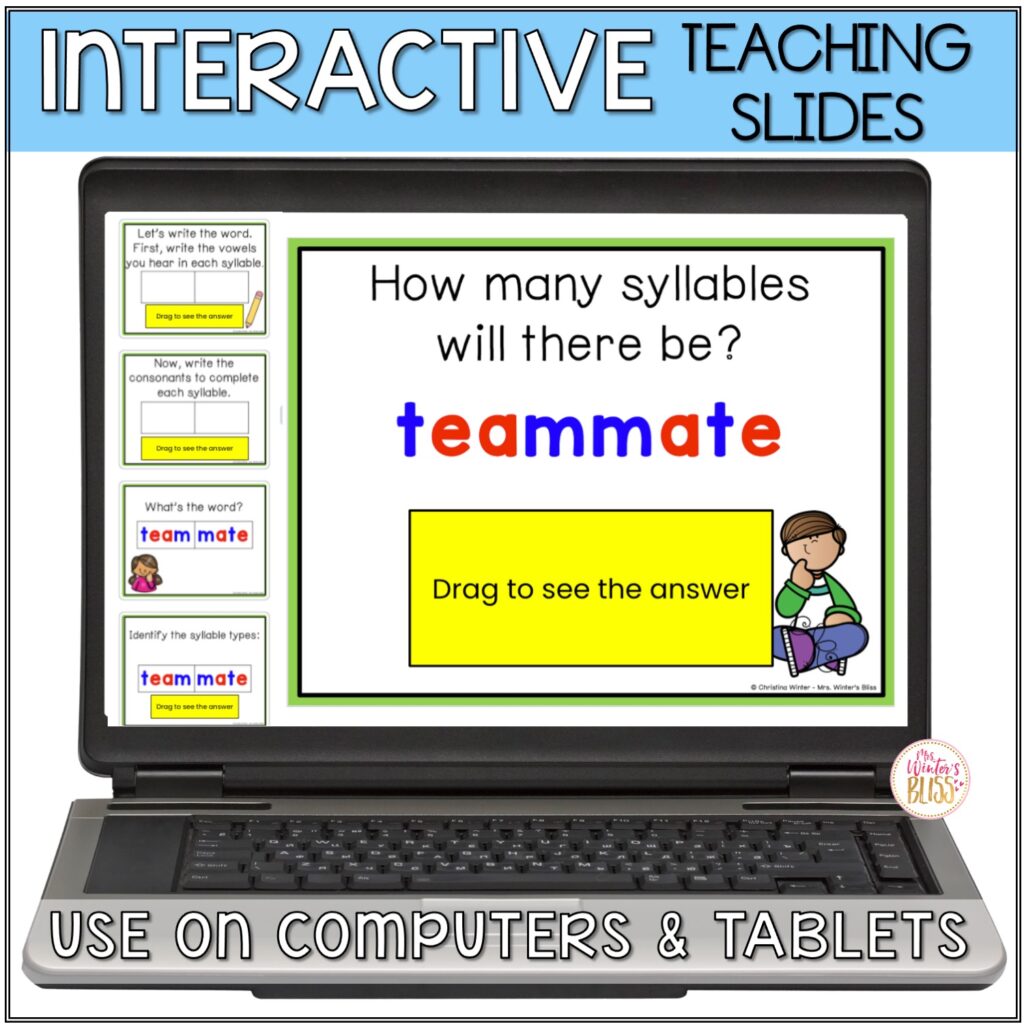
Next, use these small group practice activities to guide your students to master the six syllable types. Save time by printing the activities once and using a sheet protector that students can write and erase as you lead them through the routine of identifying the vowels, number of syllables, and dividing the syllables of each word.
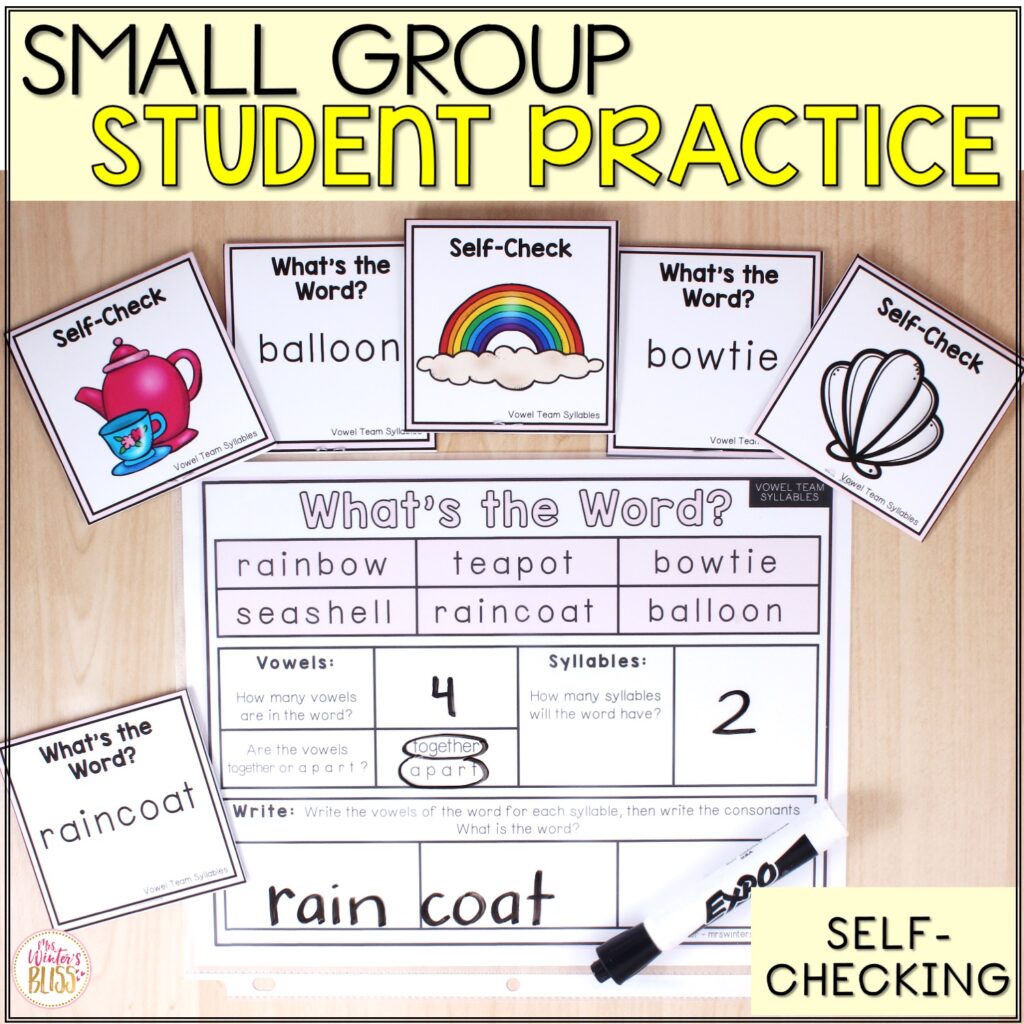
Then, students can continue with the same routine independently with interactive digital slide activities. Students will get immediate feedback for each word by sliding the self-checking box to check their work!
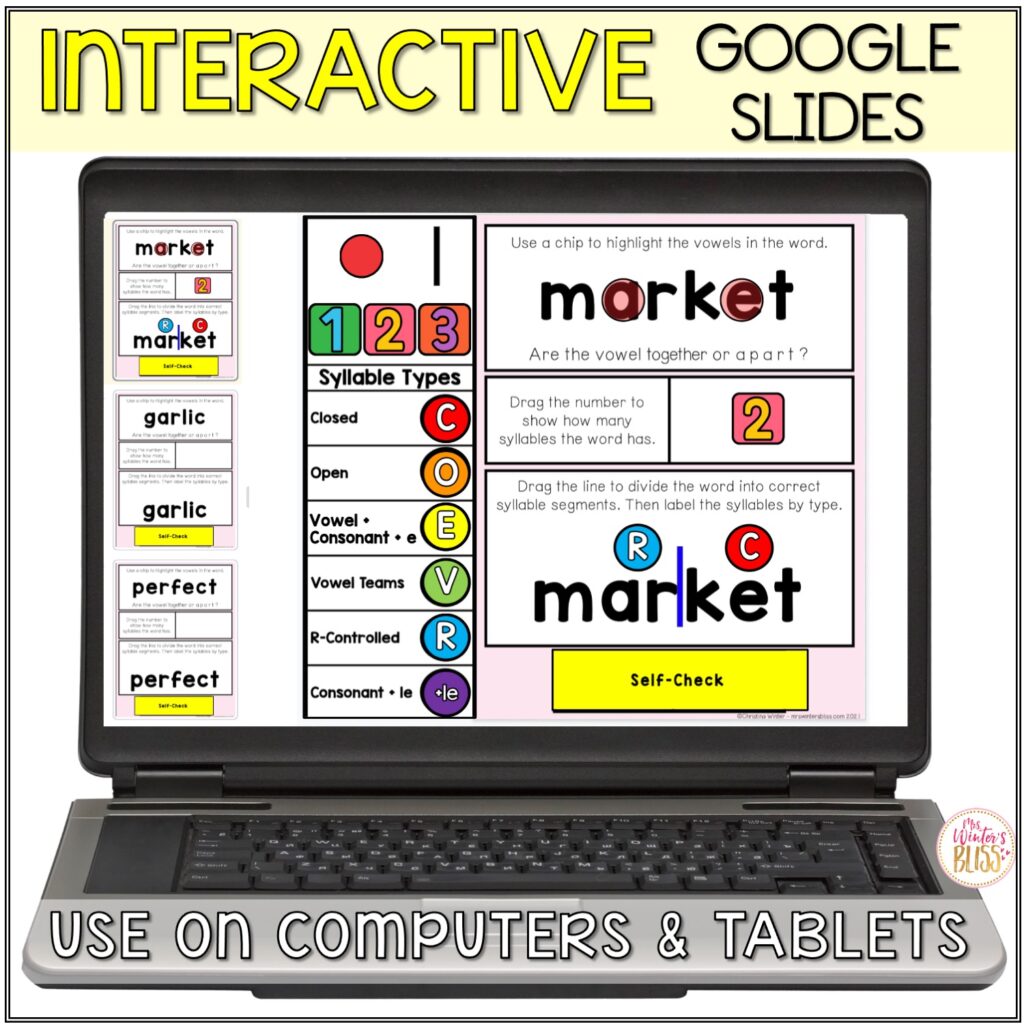
Finally, the printables provide students with independent practice decoding one syllable, two syllable, and three syllable words and are perfect for small group instruction!
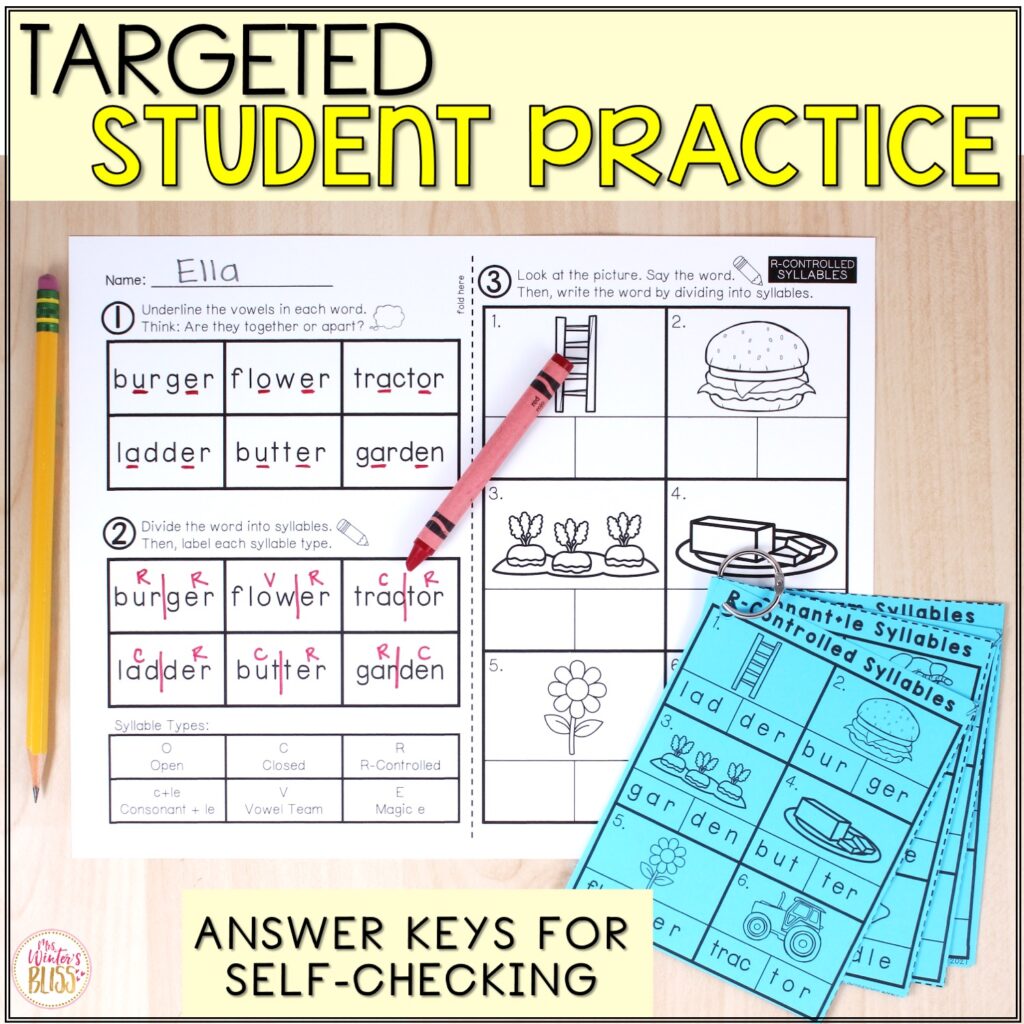
Once students have mastered the different syllable types, they can use the printable practice sheets or digital slides for independent practice during literacy centers.
Unsure of how to teach your students the syllable types? No worries, this resource includes research based information for you, as well as links to additional resources. You’ll also get a syllable types’ scope and sequence so you know the correct order to teach them.
Finally, you’ll get teaching posters for each type of syllable that you can use for your direct instruction and/or post in your classroom so students can reference them when needed!
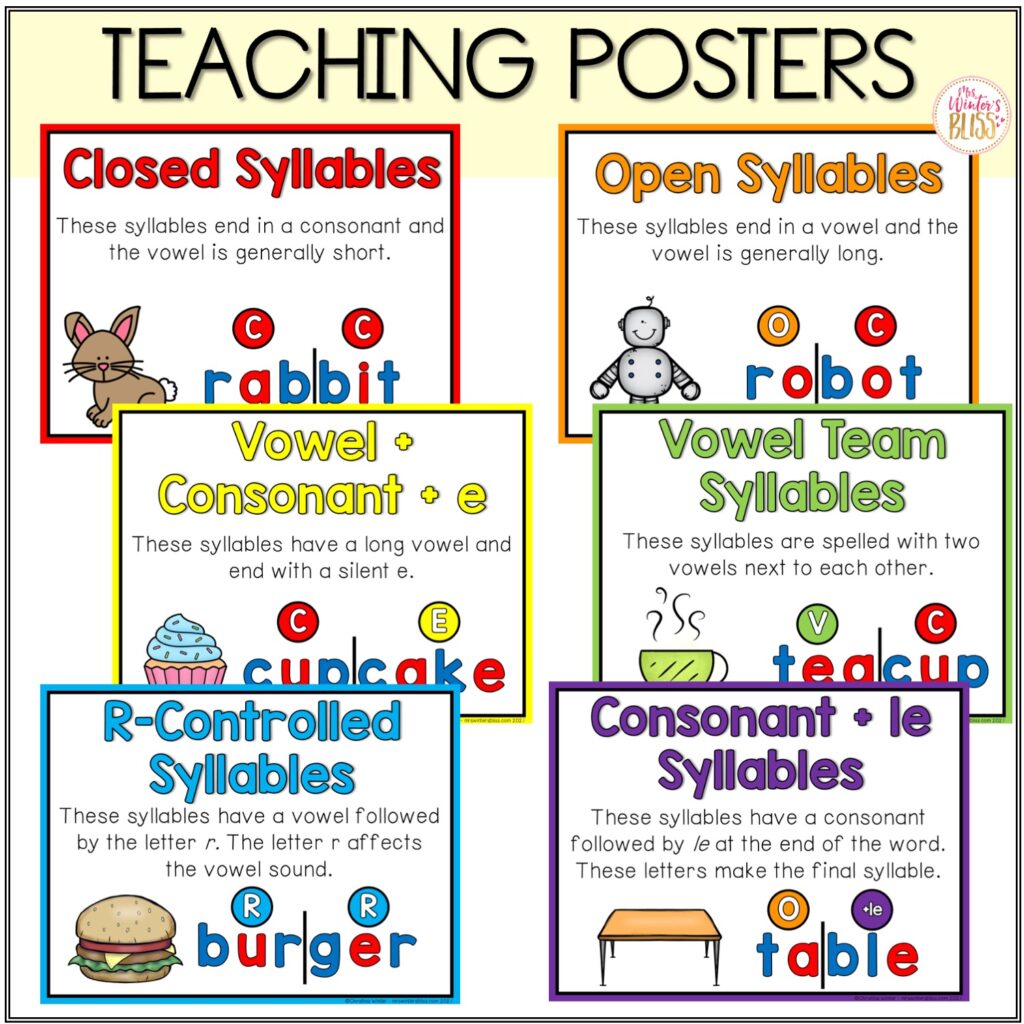
Are you ready to begin teaching syllable types in your classroom? To get you started I’m sharing FREE Syllable Types and Syllable Division – Digital & Printable Activities! This sample makes a perfect literacy center or independent activity! Grab it here:
-
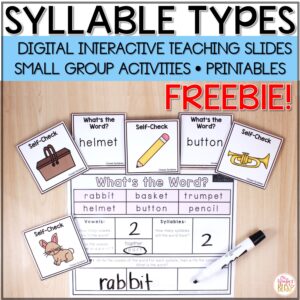 FREE Syllable Types and Syllable Division – Digital & Printable Activities$0.00Rated 5.00 out of 5 based on 23 customer ratings
FREE Syllable Types and Syllable Division – Digital & Printable Activities$0.00Rated 5.00 out of 5 based on 23 customer ratings
I hope the information, ideas, and resources I’ve shared today will assist you in introducing your students to the different types of syllables as you help them to become stronger, more effective readers!
-shop this post-
-
 FREE Syllable Types and Syllable Division – Digital & Printable Activities$0.00Rated 5.00 out of 5 based on 23 customer ratings
FREE Syllable Types and Syllable Division – Digital & Printable Activities$0.00Rated 5.00 out of 5 based on 23 customer ratings -
Sale Product on sale
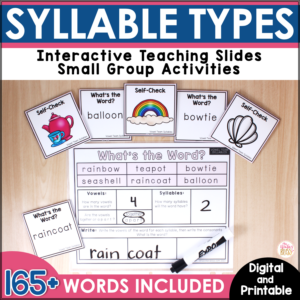 Syllable Types and Syllable Division – Digital & PrintableEarn 0 Reward Points
Syllable Types and Syllable Division – Digital & PrintableEarn 0 Reward Points$18.00Original price was: $18.00.$16.00Current price is: $16.00.Rated 5.00 out of 5 based on 4 customer ratings
–PIN for LATER–










